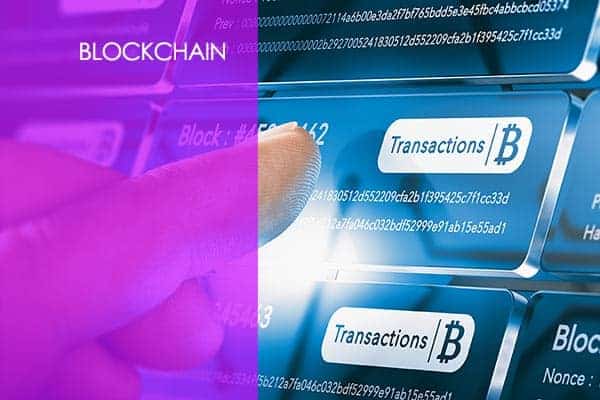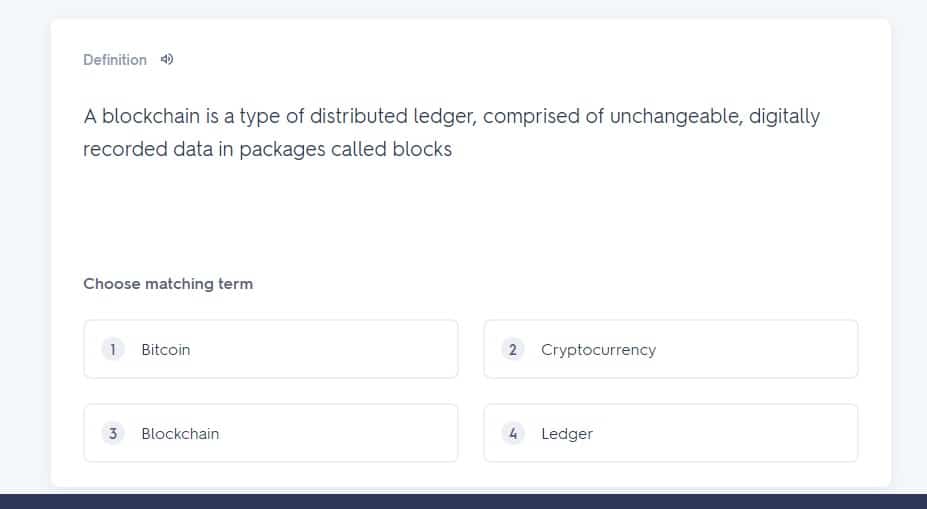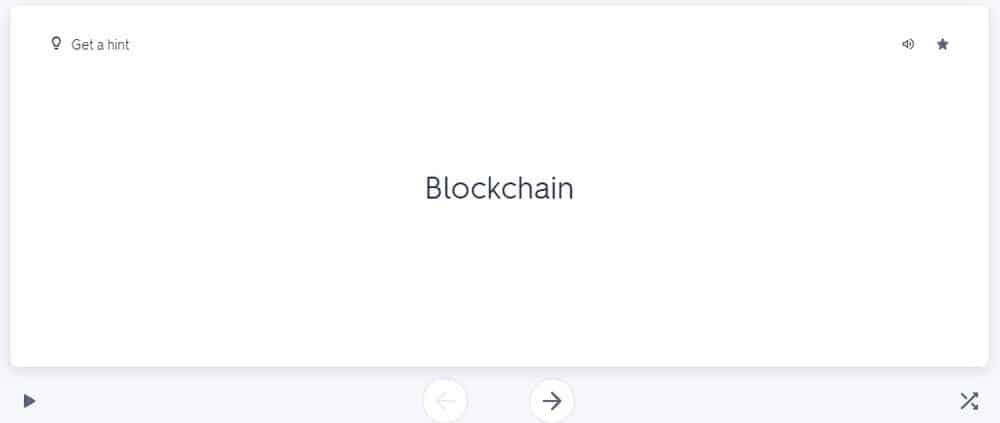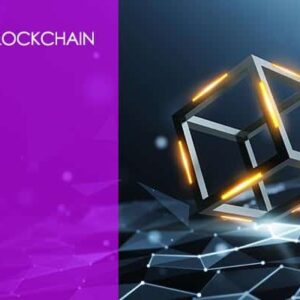Learn How To Become A Certified Blockchain Solutions Architect (CBSA)
Welcome to the cutting-edge world of blockchain technology, where innovation and opportunity abound! Are you ready to become a Certified Blockchain Solutions Architect (CBSA) and unlock a world of possibilities? The time is now!
Introducing the thrilling and game-changing Certified Blockchain Solutions Architect (CBSA) LiveLessons Course! This transformative program is tailor-made for technology enthusiasts, forward-thinking engineers, visionary application developers, and savvy IT administrators who want to harness the immense power of blockchain.
Get ready to dive deep into the exciting realm of blockchain as we take you on a thrilling journey through its core concepts, components, and mind-boggling potential. Discover the secrets behind distributed ledgers, explore the fascinating terminology, and understand why blockchain is reshaping the very fabric of business and government operations worldwide.
This course is not just about acquiring knowledge; it’s about becoming a trailblazer in the field of blockchain solutions architecture. Imagine being at the forefront of the blockchain revolution, confidently guiding your customers and clients toward groundbreaking solutions that enhance their operations and drive efficiency like never before.
With the Certified Blockchain Solutions Architect (CBSA) certification, your value in the industry will skyrocket. Become the go-to expert for larger Value Added Resellers (VARs), Vendors, and Integrators who are desperate for professionals with the expertise to navigate the blockchain landscape. The demand for skilled blockchain solutions architects is soaring, and this certification will open doors to exciting career opportunities and substantial growth potential.
But how do you conquer the CBSA exam and earn your prestigious certification? Fear not! Our comprehensive course has got you covered. We’ve identified the ten most critical focus areas that the exam will test you on. We’ll delve deep into each topic, equipping you with the in-depth knowledge and understanding you need to ace the exam with confidence.
But that’s not all! We’ll provide you with insider tips and exam strategies to ensure you’re fully prepared for any surprises that may come your way during the test. We understand that conquering an exam can be daunting, but with our guidance, you’ll breeze through it like a true blockchain solutions architect extraordinaire.
So, are you ready to take your career to unparalleled heights? Join us on this exhilarating journey as we unlock the infinite possibilities of blockchain technology. Get certified as a Certified Blockchain Solutions Architect (CBSA), and become a driving force behind the transformational power of blockchain in the modern world.
Don’t miss out on this extraordinary opportunity. Enroll now and let’s embark on this exciting adventure together!
You should take this course because…
- You are new to blockchain technology and want to understand the basic concepts of blockchain and what materials to study for a Blockchain certification.
- Anyone who has an interest in Blockchain technology and would be interested in obtaining the Certified Blockchain Solutions Architect (CBSA) Certification
- You need an introduction to the objectives of the Certified Blockchain Solutions Architect (CBSA) exam in a concise format that provides study materials
- You are an aspiring blockchain architect that would like to validate your knowledge with the industry-leading blockchain architecture certification
- You need to understand the use cases for blockchain and resources to help get started in the blockchain space.
Course Outline:
Module 1: Certified Blockchain Solutions Architect Overview
1.1 Module 1 Introduction
1.2 What is a CBSA
1.3 Exam Questions
1.4 Exam Objectives
Module 2: Blockchain 101 Terminology and Components
2.1 Module 2 Introduction
2.2 What is a Blockchain
2.3 Blockchain Terminology
2.4 Blockchain Key Components
Module 3: Exam Objectives
3.1 Module 3 Introduction
3.2 Proof of Work, Proof of Stake, Other Proof Systems
3.3 Why Cryptocurrency is Needed
3.4 Public, Private, and Permissioned Blockchains
3.5 How Blocks Are Written to a Blockchain
3.6 Block Activity Demo
3.7 Transactions Whiteboard
3.8 Cryptography
3.9 LTC Wallet Demo
3.10 Database or Blockchain
3.11 Public Blockchain Common Uses
3.12 Private & Permissioned Blockchain Common Uses
3.13 Launching Your Own Blockchain
3.14 Segwits and Forks
3.15 Mining
3.16 Byzantine Fault Tolerance
3.17 Consensus Among Blockchains
3.18 Hasing
3.19 Anders Hashing Demo
3.20 Security in Blockchain
3.21 Smart Contracts and dApps
3.22 History of Blockchain
3.23 Blockchain Programming Languages
3.24 Common Testing and Deployment Practices
3.25 Metamask Demo
3.26 Value Creation
3.27 Blockchain Architecture
3.28 Corda Blockchain Architecture Whiteboard
3.29 Enterprise Blockchains
3.30 Bitcoin Improvement Protocols
Module 4: Hyperledger
4.1 Module 4 Introduction
4.2 Hyperledger Project
4.3 Hyperledger Fabric
4.4 Hyperledger Chaincode
4.5 Hyperledger Fabric Whiteboard
4.6 Hyperledger Fabric on AWS Demo
Module 5: Ethereum
5.1 Module 5 Introduction
5.2 Ethereum Overview
5.3 Ethereum EVM
5.4 Ethereum Browsers
5.5 Ethereum Development
5.6 Etherscan Demo
Module 6: Course Closeout
6.1 Module 6 Introduction
6.2 Summary Review
6.3 Taking the CBSA Exam
6.4 Practice Question
Frequently Asked Questions About Certified Blockchain Solutions Architect
What is a Certified Blockchain Solutions Architect (CBSA)?
What are the requirements to become a Certified Blockchain Solutions Architect?
What skills does a Certified Blockchain Solutions Architect possess?
What are the benefits of hiring a Certified Blockchain Solutions Architect?
How can one become a Certified Blockchain Solutions Architect?
Gain foundational knowledge: Start by learning the fundamentals of blockchain technology, including its concepts, architectures, and various use cases. This can be done through online courses, books, tutorials, or attending workshops.
Acquire technical skills: Develop proficiency in programming languages commonly used in blockchain development, such as Solidity or Go. Gain hands-on experience in smart contract development and familiarize yourself with popular blockchain platforms like Ethereum or Hyperledger.
Gain practical experience: Engage in real-world projects or internships that involve implementing blockchain solutions. This practical experience will help you apply your theoretical knowledge to practical scenarios, understand challenges, and develop problem-solving skills.
Obtain certification: Research and select a reputable certification provider that offers a Certified Blockchain Solutions Architect (CBSA) program. Enroll in the certification program and prepare for the certification exam by studying the provided materials and practicing sample questions. Once ready, take the exam and upon successful completion, earn the CBSA designation.
Remember that becoming a Certified Blockchain Solutions Architect requires continuous learning and staying updated with the evolving blockchain landscape. Engaging in industry events, networking with professionals, and exploring advanced blockchain concepts will further enhance your expertise in this field.
Your Training Instructor

Joe Holbrook
Independent Trainer | Consultant | Author
Joe Holbrook has been in the IT field since 1993 when he was exposed to several HPUX systems on board a U.S. Navy flagship. He has migrated from the UNIX world to Storage Area Networking(SAN), Enterprise Virtualization, and Cloud Architecture, and now specializing in Blockchain and Cryptocurrency. He previously worked for numerous companies like HDS, 3PAR, Brocade, HP, EMC, Northrup Grumman, ViON, Ibasis.net, Chematch.com, SAIC, and Siemens Nixdorf.
Currently, he works as a Subject Matter Expert specializing in Enterprise Cloud and Blockchain Technologies. He is the CLO of Techcommanders.com Elearning and consulting, He holds numerous IT certifications from AWS, GCP, HDS, and other organizations.
He is an avid speaker and well-known course author residing in Jacksonville, Florida.





